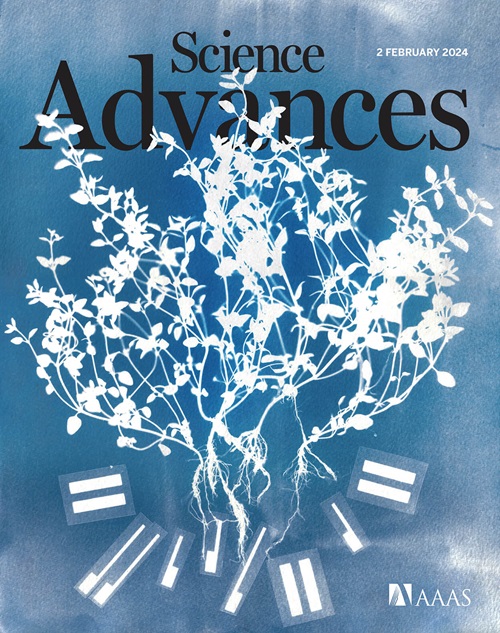埃迪卡拉纪起源和埃迪卡拉-寒武纪元古宙的多样化
IF 11.7
1区 综合性期刊
Q1 MULTIDISCIPLINARY SCIENCES
引用次数: 0
摘要
动物多样化的时间尺度一直是进化史如何与地质年代校准的争论焦点。分子钟分析无一例外地估计动物起源于冷元纪或托尼纪,而明确的动物化石则首次出现在埃迪卡拉纪。然而,对埃迪卡拉纪主要生物群落的重新定年以及几种埃迪卡拉纪冠网藻类的发现,促使对分子钟分析进行重新校准。我们提出了经修订的化石定标,并将其用于分子钟分析,以估计元古宙进化史的时间尺度。综合系统发育关系、时钟模型和校准策略等各种不确定因素,我们估计元古宙起源于埃迪卡拉纪早期,真尾目起源于埃迪卡拉纪中期,双足目起源于埃迪卡拉纪上期,许多冠叠体起源于埃迪卡拉纪-寒武纪之间,或完全起源于寒武纪。这些结果与化石记录更为吻合,与海洋含氧化相吻合,但它们否定了对化石记录的字面解读。本文章由计算机程序翻译,如有差异,请以英文原文为准。

Ediacaran origin and Ediacaran-Cambrian diversification of Metazoa
The timescale of animal diversification has been a focus of debate over how evolutionary history should be calibrated to geologic time. Molecular clock analyses have invariably estimated a Cryogenian or Tonian origin of animals while unequivocal animal fossils first occur in the Ediacaran. However, redating of key Ediacaran biotas and the discovery of several Ediacaran crown-Metazoa prompt recalibration of molecular clock analyses. We present revised fossil calibrations and use them in molecular clock analyses estimating the timescale of metazoan evolutionary history. Integrating across uncertainties including phylogenetic relationships, clock model, and calibration strategy, we estimate Metazoa to have originated in the early Ediacaran, Eumetazoa in the middle Ediacaran, and Bilateria in the upper Ediacaran, with many crown-phyla originating across the Ediacaran-Cambrian interval or elsewise fully within the Cambrian. These results are in much closer accord with the fossil record, coinciding with marine oxygenation, but they reject a literal reading of the fossil record.
求助全文
通过发布文献求助,成功后即可免费获取论文全文。
去求助
来源期刊

Science Advances
综合性期刊-综合性期刊
CiteScore
21.40
自引率
1.50%
发文量
1937
审稿时长
29 weeks
期刊介绍:
Science Advances, an open-access journal by AAAS, publishes impactful research in diverse scientific areas. It aims for fair, fast, and expert peer review, providing freely accessible research to readers. Led by distinguished scientists, the journal supports AAAS's mission by extending Science magazine's capacity to identify and promote significant advances. Evolving digital publishing technologies play a crucial role in advancing AAAS's global mission for science communication and benefitting humankind.
 求助内容:
求助内容: 应助结果提醒方式:
应助结果提醒方式:


